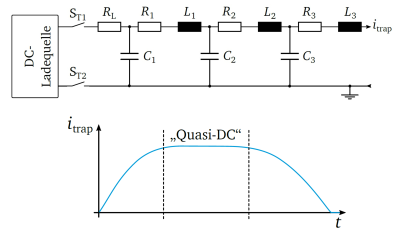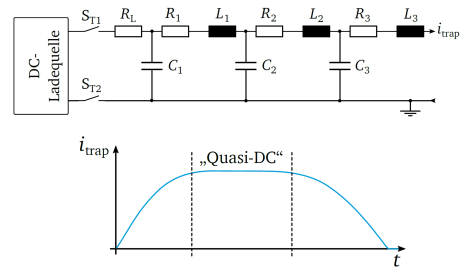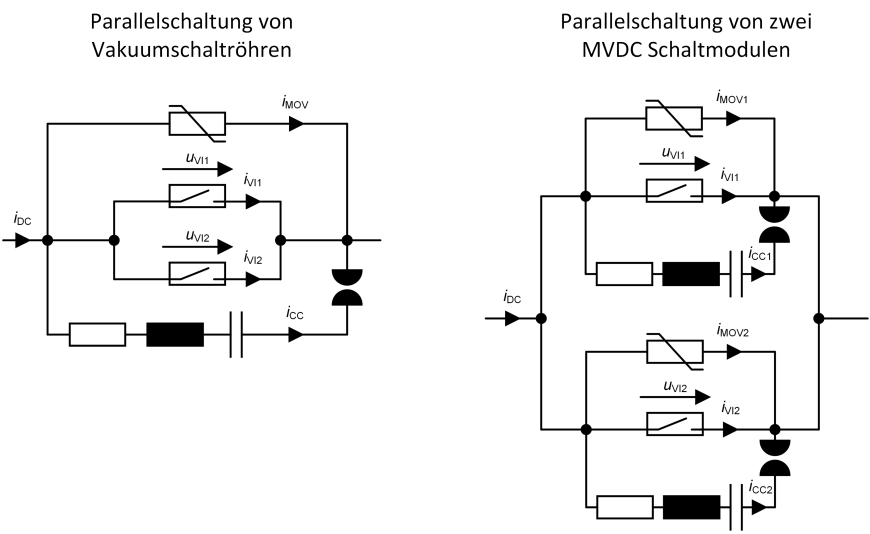Project-Management
| Name | Working area(s) | Contact | |
|---|---|---|---|

| Peter Hock M.Sc. 2016 - 2021 |
Project description
Modification of the synthetic test setup to use a trapezoidal high current impulse.
In past investigations for HVDC switching a 25 Hz sinus impulse was used for testing.
For future investigations to replace a direct current the test setup is modified to create a trapezoidal high current impulse. A flat top of 7ms with less current ripple than 2 % is created. Within this time slot DC switching tests will be performed.
Investigations on the Cascading of direct current switches
Main purpose of the project are the investigations on serial and parallel connections of DC switchgear.
A total of four DC switching modules have been installed for this purpose. Each DC switching module consists of a main path (vacuum interrupter), commutation path (RLC resonant circuit with precharged capacitor and a triggered graphite spark gap) and an energy absorption path (MOV).
A feasibility study on various serial and parallel connections is being carried out. Special interests are in the current distribution of parallel connection and in the voltage distribution of serial connections.The differences between parallel or serial connected DC switching modules against just parallel or serially connected vacuum interrupters are shown. Various fault scenarios are illustrated with the assistance of the test circuit control system.
Furthermore the combination of serial and parallel circuits, 2S2P circuit, is also examined. Here a total of four DC switching modules are interconnected together.
Ageing of metal oxide surge arresters
Metal oxide arresters are typically used in the energy absorption path of MVDC as well as HVDC switches. However, the currently available metal oxide arresters are not designed for this special purpose.
Accordingly, the ageing behaviour of commercially available metal oxide arresters used in a DC breaker is investigated.
For this purpose, an automated test setup was developed which stresses the arresters with the characteristic current impulse generated during a DC switching process.
In order to be able to make a statement about the ageing, the metal oxide arresters are characterised at regular intervals. Finally, the examined arresters are subjected to a destructive testing, which compares aged arresters with brand-new arresters.










